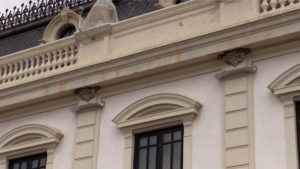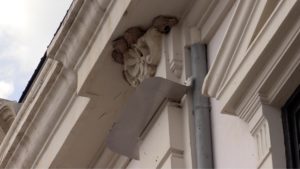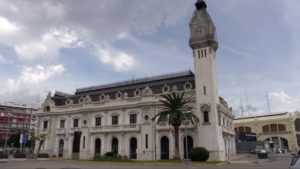
In recent years the swallows have returned to the Clock Building, their emblematic home in Valencia
The PAV has installed trays that collect the excrement from the nests to prevent the deterioration of the building and to encourage nesting
This measure respects the location of the nests of these birds which are under special protection
The swallow (Delinchon urbicum) is possibly the most famous migratory bird in the world. Its song announces the arrival of spring and good weather. They are birds with an amazing memory capable of finding the same nest they used the year before. And that memory has meant that in recent years the swallows have returned to the Clock Building, an emblematic place with privileged views, to raise their young. To protect their nests, the Port Authority of Valencia (PAV) has installed trays, thus also avoiding the degradation of the building and guaranteeing the comfort of these birds, which after a long journey of more than 8,000 kilometres in their migration, find their home prepared in the Clock Building for their stay in Valencia.

The Clock Building is one of the most iconic constructions in Valencia. Built in 1916, it is inspired by the French style of the time and was one of the first buildings to be seen when entering the city by boat. The Clock Building was created as a maritime station for the transport of goods and passengers. It was a facility that served as a reception for people arriving in the city – and as a home for birds in their migration – but it also fulfilled a humanitarian mission as it welcomed people passing through the city who needed a space to rest. The Clock Building suffered all the ups and downs of recent history in Valencia and after the last restoration on the occasion of the America’s Cup in 2007 the swallows left the building but in recent years have returned to what has always been their home.
In total, the PAV has placed 16 trays in the locations where there are swallow nests that serve to collect the excrement that is generated and that deteriorates the building, thus respecting the location of the nests and avoiding their removal. These trays prevent the faeces of these birds that would deteriorate the Clock Building and its surroundings, and preserve the health conditions of the people who visit it. The swallows are included in the List of Wild Species under the Special Protection Regime that includes Natural Heritage and protects these birds from being disturbed. This prohibition includes, the capture, collection and retention of their nests, their offspring or their eggs, even when these are empty. The trays installed by the PAV allow the swallows to continue their normal cycle and collect the excrement from the nests, which are cleaned periodically, to avoid damaging the historic Clock Building.


